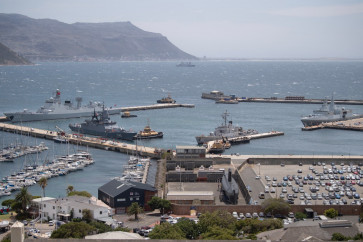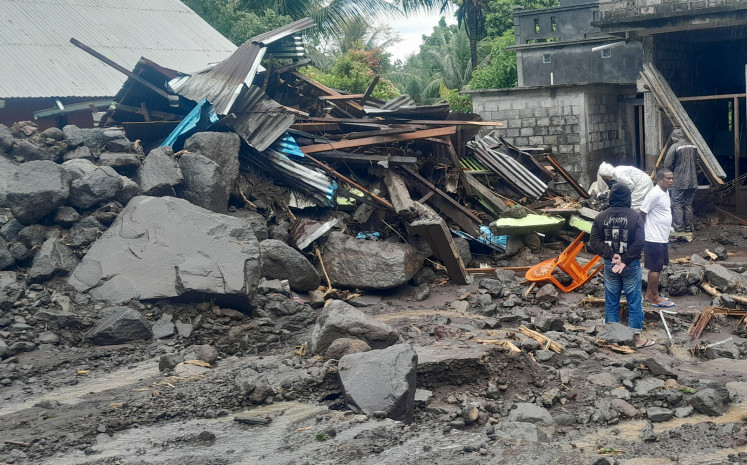Popular Reads
Top Results
Can't find what you're looking for?
View all search resultsPopular Reads
Top Results
Can't find what you're looking for?
View all search resultsASEAN expects US connectivity despite crisis
Ten ASEAN economic ministers are meeting in Manado, North Sulawesi, this week for an ASEAN Economic Ministers’ Meeting
Change text size
Gift Premium Articles
to Anyone
T
en ASEAN economic ministers are meeting in Manado, North Sulawesi, this week for an ASEAN Economic Ministers’ Meeting. Commerce and industry ministers from dialogue partners will also join the meeting. The Jakarta Post’s Mustaqim Adamrah interviewed ASEAN Secretary-General Surin Pitsuwan on Tuesday about ASEAN’s progress in the Economic Community so far. Below are excerpts of the interview:
Question: What is the latest development in ASEAN connectivity projects?
Answer: Japan, China, Australia, the US and the EU have expressed interest. When they say they are interested, they mean their business communities are interested.
The government can facilitate them, the government can support information dissemination, and in some cases, they can support feasibility studies.
Real investment from the private sector can be in the form of PPP (public private partnership) or concession.
There are physical activities to be undertaken in infrastructure, energy, water, electricity, telecommunications, shipping, railway and roads. These are critical to us.
Governments of member states can participate directly in institutional connectivity — regulations; the ASEAN landscape for conducive flow of goods and services; people that would require support by expertise; and coordination among customs, for example, how do you set standards in commodities.
In the third part, there is people-to-people integration that is pretty much our own cooperation.
There are two areas of investment: physical infrastructure such as railroads and energy; and institutional connectivity with requirement expertise supporting us in the ASEAN single window (for example) to make sure that one customs form is digitized in one port (to be sent) to the next port.
We have set up an ASEAN infrastructure fund of about US$500 million managed by the ADB (Asian Development Bank).
The private sector can also contribute to it.
The US has expressed its interest in helping with ASEAN connectivity projects. But with the US ongoing debt crisis, what is the prospect of its involvement in connectivity projects?
Certainly there are funds and companies from the US who are already engaging outside the US economy, (including) in ASEAN … and I am sure they will contribute, they are interested. This is a major project — toll roads, telecommunications, railways. And, we need them … they will have to arrange some financial (means).
What is the latest development of the ASEAN Single Window?
Six countries have applied : Thailand, Indonesia, Singapore, the Philippines, Brunei and Malaysia.
There was a problem with Singapore in the past as the country was reportedly reluctant to join the ASEAN Single Window although it had reportedly exchanged export and import data online with major economies such as China, Korea and Japan.
What is the current situation?
Singapore has a very open trade policy.
What is the latest figure of intra-trade among ASEAN countries?
It was about 25.4 percent in 2010, up from 24.5 percent in 2009, an increase of about 0.9 percent, which is going in the right direction.
Officials are already working on the target of 30 to 35 percent.
For the first time, intra-ASEAN investments surpassed US$10 billion. The last highest point of intra-investment was $9.6 billion in 2007. In 2010, it was $2.1 billion.
How do you catch up to the 30-40 percent target in the intra-trade percentage?
Small and medium enterprises, investing in each other, outsourcing from each other, sourcing from each other and more investments, are all factors that will help. It has to increase from there, for sure.
(The figure of) 25 percent is low compared to NAFTA (the North America Free Trade Agreement), which is about 38-40 percent, or compared to the European Union of about 68-70 percent.
There is no definite target for us. But it has to be increased. So by the year 2015, I hope it can reach 40-45 percent. That is my wish.










